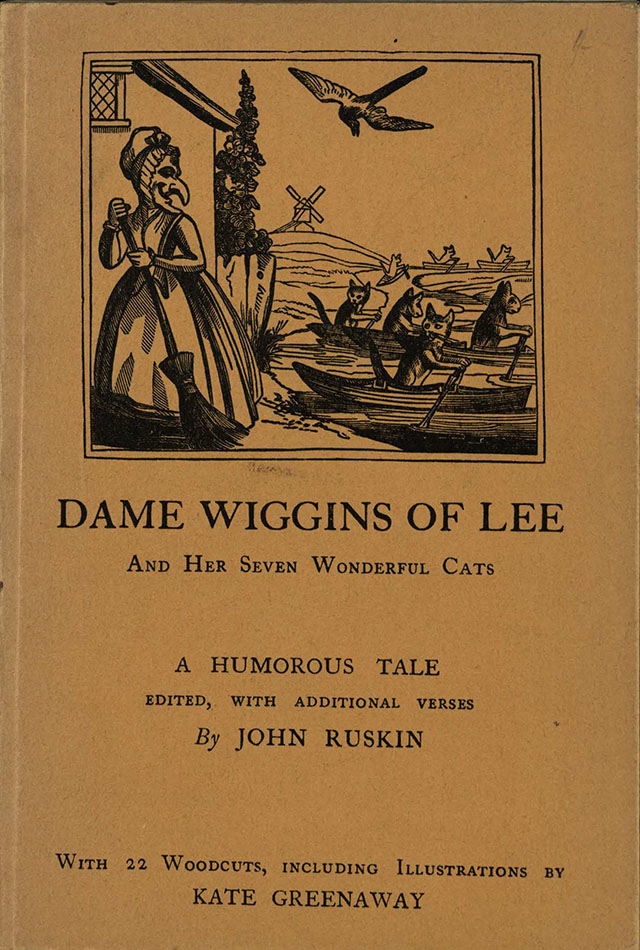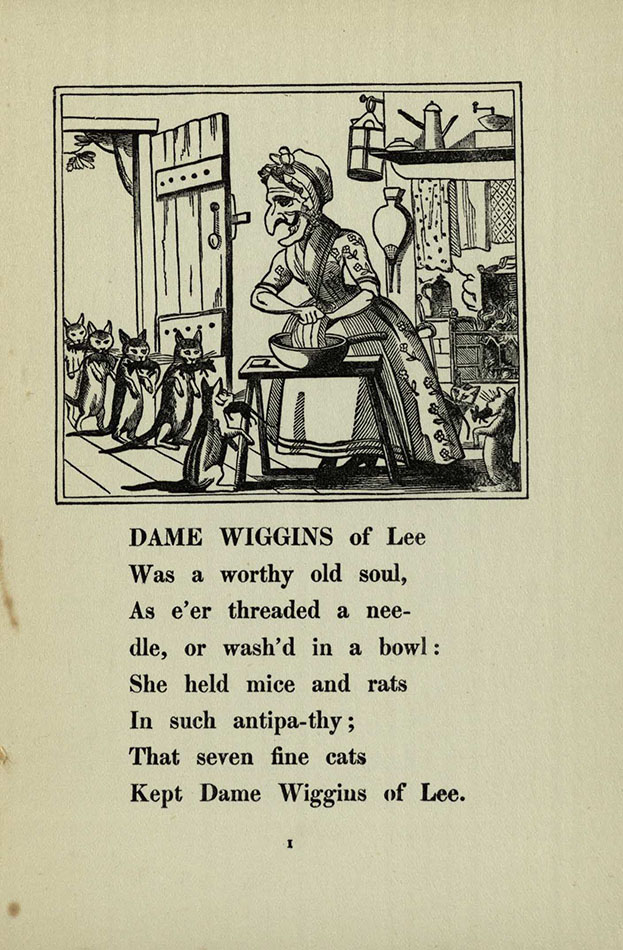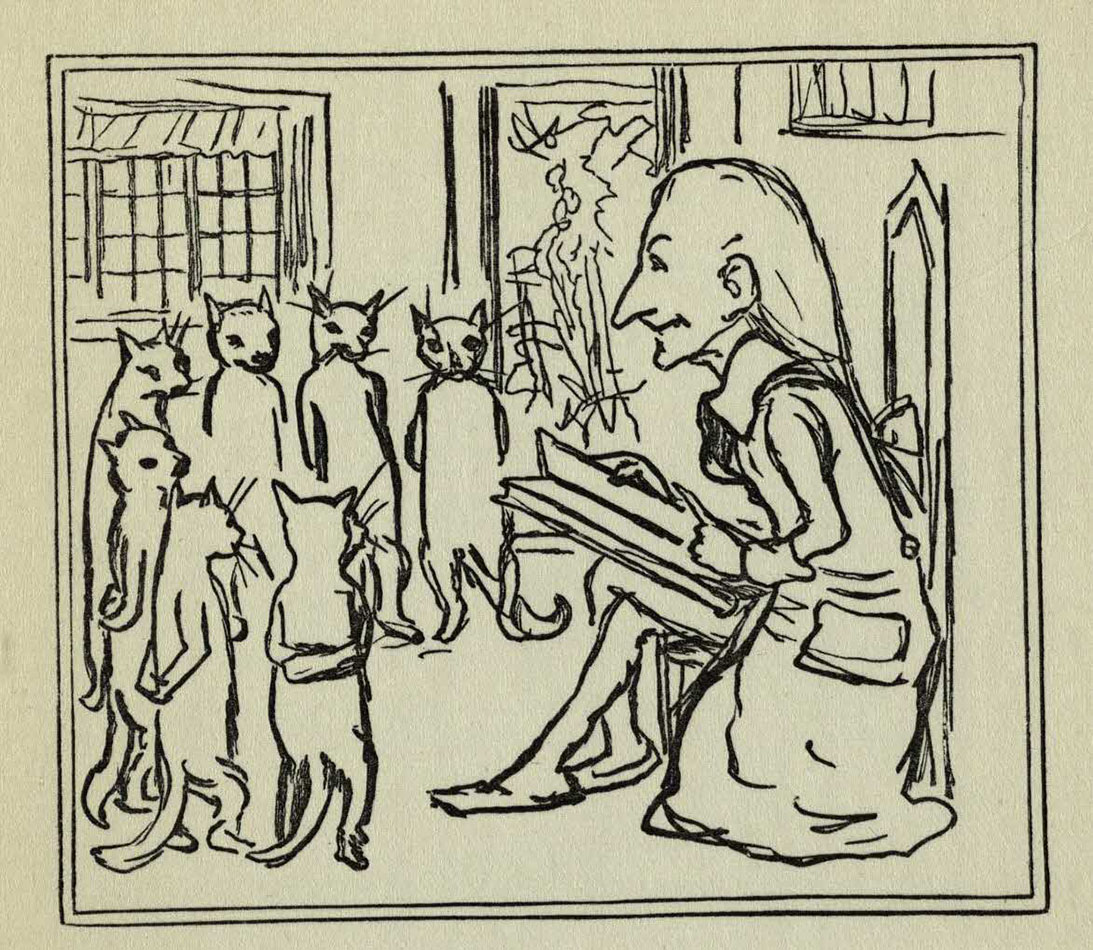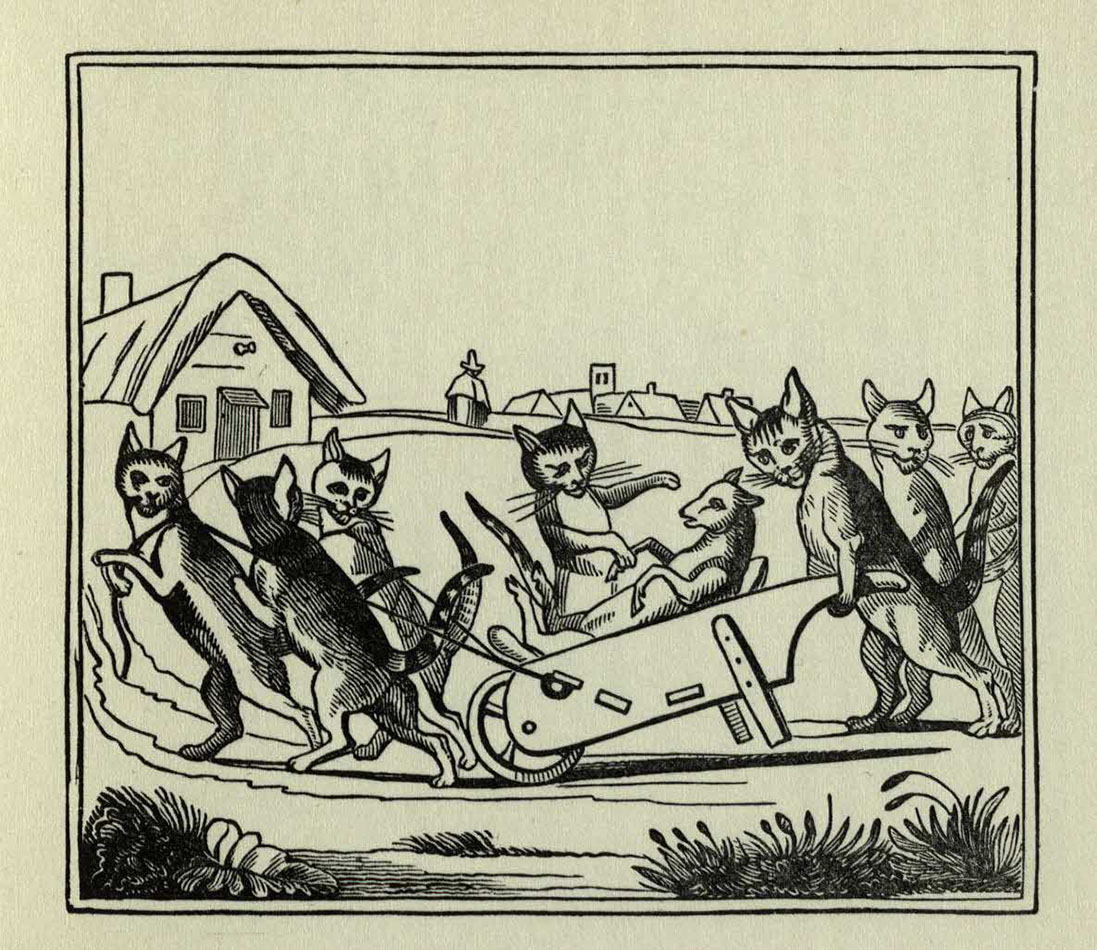Reading the Collections, Week 20: Dame Wiggins of Lee, and her seven wonderful cats
Those who know of John Ruskin (1819-1900) as Victorian Britain’s preeminent art critic and author of titles such as The Stones of Venice, Modern Painters and The Seven Lamps of Architecture may be surprised to discover among his publications this tale of Dame Wiggins and her cats.

First published in 1823, when Ruskin was four years old, it is believed to have been written by a Mrs Pearson, who has now disappeared from the annals of literary history. Ruskin loved this poem and described it in his autobiography as among ‘my calf milk of books’. He had it re-published in 1885 by his own publishing company, with four new illustrations by his friend Kate Greenaway (who gives her name to the Kate Greenaway medal, awarded annually by CILIP for distinguished illustration in a children’s book).
It tells of the adventures of Dame Wiggins’s extremely clever cats, who not only keep the mice and rats down but also attend school and go adventuring around the countryside, rescuing sick lambs and riding on the backs of geese. The poem begins:
Dame Wiggins of Lee
Was a worthy old soul,
As e’er threaded a nee-
dle, or wash’d in a bowl:
She held mice and rats
In such anti-pathy;
That seven fine cats
Kept Dame Wiggins of Lee.

This gives a flavour of the poetry which, to be blunt, was unlikely to cause Wordsworth any sleepless nights. The line break over nee-dle makes me wince every time! In his edition Ruskin has added four verses of his own because, as he explains in his preface, he had noticed a very serious omission: ‘In the old book, no account is given of what the cats learned when they went to school, and I thought my younger readers might be glad of some notice of such particulars.’ This consideration of children’s imaginations is typical of Ruskin, who was a patron of Winnington Hall, a progressive school for girls, and who wrote several books for young people including the best-selling fairytale The King of the Golden River.
As an undergraduate at Oxford, Ruskin was awarded the Newdigate Poetry Prize, one of the most prestigious prizes for poetry, and which is still awarded to students at Oxford today. Rather modestly, Ruskin wrote of his extra verses to Dame Wiggins that ‘my rhymes do not ring like the real ones’. In fact, one might argue that Ruskin’s verses ring rather better than the originals:
The Master soon wrote
That they all of them knew
How to read the word “milk”
And to spell the word “mew”.
And they all washed their faces
Before they took tea:
‘Were there ever such dears!’
Said Dame Wiggins of Lee.

Rather than reprint the original coloured illustrations, Ruskin had them facsimiled and in his preface he suggests that ‘clever children will like having the mere outlines to colour in their own way’. These woodcuts are rather terrifying, but Kate Greenaway’s additional illustrations, such as this one showing the cats gathered round their school master, are altogether softer and less sinister.
To understand what this great Victorian intellectual was playing at, writing verses about cats at school, one needs a little biographical background. Ruskin was born in London to wealthy middle-class Scottish parents and by his mid-twenties he was already a celebrated art critic. His books on painting and architecture changed the way people thought about these subjects. He was also an important champion of Turner and the Pre-Raphaelite Brotherhood and he worked hard to explain the merits of the radical new styles of these painters to an initially sceptical public. Charlotte Brontë said of Ruskin’s Modern Painters, ‘this book seems to give me eyes’.
In the second half of his life he turned his attention to social reform and the plight of the working man. These concerns were already present in his books of art criticism, since Ruskin claimed that great art could only be created within a healthy society, one in which artists were free to express their personalities. This idea is summarised in ‘The Nature of Gothic’, a chapter from The Stones of Venice which was distributed to all students at the London Working Men’s College as a sort of manifesto. Ruskin’s political writings, particularly Unto This Last, a damning critique of industrial capitalism, inspired William Morris, Gandhi and the founders of the Labour Party.
Whilst a public success, Ruskin didn’t have a happy private life. His marriage was annulled after five years, and his heart was subsequently broken by the death of the woman he truly loved, Irish beauty Rose La Touche. His grief for Rose sparked a series of nervous breakdowns and he spent the last ten years of his life in an almost vegetative state at Brantwood, his Lake District home. His preface to Dame Wiggins ends: ‘I have the greatest pleasure in commending to the indulgence of the Christmas fireside [this little book], because it relates nothing that is sad, and pourtrays [sic] nothing that is ugly.’ It seems this poem cheered and comforted Ruskin in his later years, and its re-publication was the result of his nostalgia for happier times.

Despite inaccurate portrayals of Ruskin in popular culture as a sexual prude, a mummy’s boy and a bully (see Mike Leigh’s film Mr Turner and Emma Thompson’s Effie Gray) Ruskin was actually an incredibly kind, intelligent man, whose ideas about art, society and nature are more relevant than ever today. His writings spurred the modern environmental movement, the formation of the National Trust, and the beginnings of social housing. He taught at the Working Men’s College and supported the founding of free public libraries. In fact, his influence on modern thought is so all-pervasive it has become almost impossible for us to see it.
I’m currently writing a novel, Brantwood, about Ruskin’s life. As well as hoping to introduce a new readership to this fascinating character, I want to draw attention to the relevance of Ruskin’s ideas to today’s society and suggest how much we owe him. The ideals that Ruskin worked towards are ideals that many of us are still working towards today.
Incidentally, there is a connection between Ruskin and St Andrews: in 1871 he was elected Lord Rector and planned to give a lecture on ‘The definition of Heroism, and its function in Scotland at this day.’ However he was disqualified because he already held a professorship at another university: as inaugural Slade Professor of Fine Art at Oxford. Ruskin dedicated himself to improving the lives of others, gave almost away all his inheritance, and never even so much as sacked a servant, looking after them all into their old age. To my mind, John Ruskin’s life offers a convincing ‘definition of heroism’.
-Victoria Mackenzie
User Services (JF Allen Library)
Great post - of course for ME since an affinity for cats. But also opened my eyes to Ruskin. Thanks. PS hope someone posts on St Andrews blog when your book is 'out'.
[…] Dame Wiggins of Lee […]
[…] The Stones of Venice (1851). His contribution to children’s literature in the form of the book Dame Wiggins of Lee and her Seven Wonderful Cats has been highlighted on Echoes in a previous […]